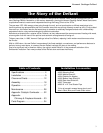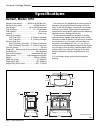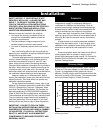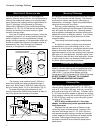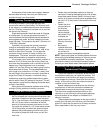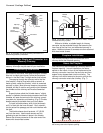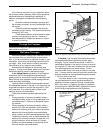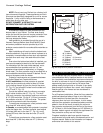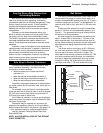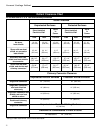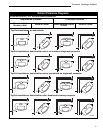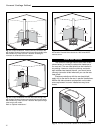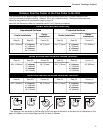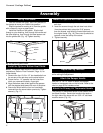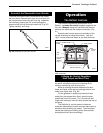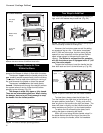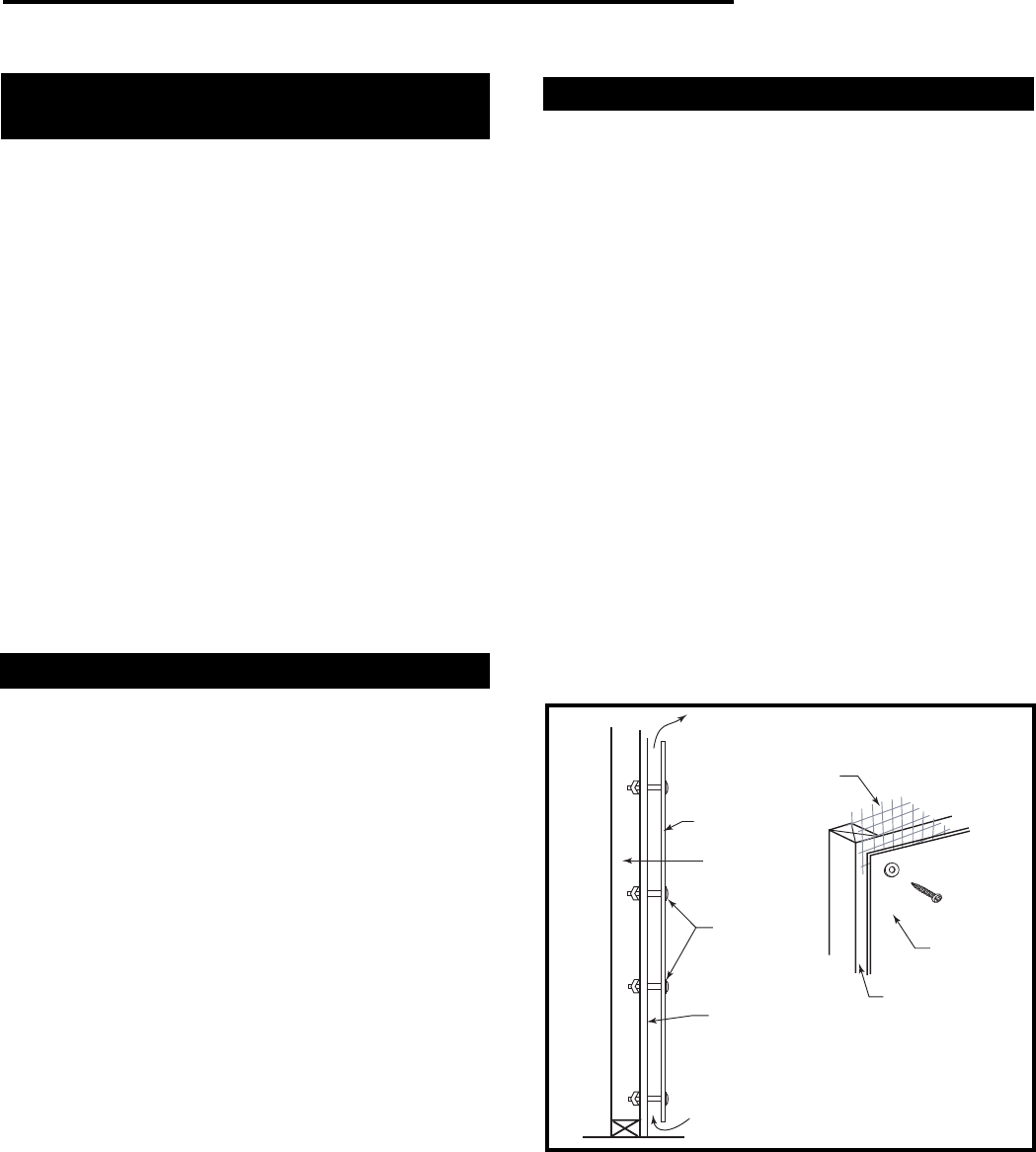
11
Vermont Castings Defiant
Keep the Stove a Safe Distance from
Surrounding Materials
Both a stove and its chimney connector radiate
heat in all directions when operating, and nearby
combustible materials can overheat dangerously if they
are too close to the heat source. A safe installation
requires that adequate clearance be maintained
between the hot stove and its connector and nearby
combustibles.
Clearance is the distance between either your
stove or chimney connector, and nearby walls, floors,
the ceiling, and any other fixed combustible surface.
The Defiant has specific clearance requirements that
have been established after careful research and
testing. These clearance requirements must be strictly
observed.
In addition, keep furnishings and other combustible
materials away from the stove. In general, a distance of
48" (1220 mm) must be maintained between the stove
and moveable combustible items such as drying
clothes, furniture, newspapers, firewood, etc. Keeping
those clearance areas empty assures that nearby
surfaces and objects will not overheat.
Safe Ways to Reduce Clearances
Clearance requirements are established to meet
every installation possibility, and they involve the
combination of these variables:
• When the stove has no listed heat shield
mounted on it.
• When the wall has no heat shield mounted on it.
• When the wall has a heat shield mounted on it.
• When the wall and stove have heat shields.
In general, the greatest clearance is required when
you place a stove and its connector near a wall with no
heat shield.
For example, when the Defiant is installed parallel
to the rear wall and no shield is used, it must be at least
33" (815 mm) from the wall behind it and at least 24"
(610 mm) from walls on either side.
If the Defiant is installed in a corner and no shield is
used, the corners of the stove must be at least 23" (585
mm) from nearby walls.
Clearances may be reduced only by means ap-
proved by the regulatory authority, and in accordance
with the clearances listed in this manual. See pages 10
- 13 for approved clearance reduction specifications.
Use only Vermont Castings Defiant Rear Heat
Shield #000-1906.
NOTE: ALCOVE INSTALLATION OF THE DEFIANT
IS NOT PERMITTED.
Wall Shields
One way to reduce clearances is with a wall shield
constructed of 24 gauge or heavier sheet metal, or of
another noncombustible material such as 1/2" (13 mm)
insulation board such as Durock
®
or Wonderboard
®
, or
common brick “laid on flat,” with the 3¹⁄₂" (90 mm) side
down.
Shields must be spaced out from the combustible
surface 1" (25 mm) on noncombustible spacers, as in
Figure 11. The spacers should not be directly behind
the stove or chimney connector.
Air must be able to flow between the wall and the
shield. At least 50% of the bottom 1" (25 mm) of the
shield must be open, and the shield must be open at
the top. Metal screening across the top will keep small
stray objects from being trapped behind the shield.
(Fig. 12)
The shield must be a minimum of 48" (1220 mm)
tall, and must extend at least 20¹⁄₂" (520mm) higher
than the top of the stove, whichever is higher. The
shield behind the chimney connector must be 30" (760
mm) wide, centered behind the pipe; for installations
that use an approved prefabricated chimney to pass
through the ceiling, the shield behind the chimney
connector must stop 1" (25 mm) below the ceiling.
Stud Wall
Framing
Wall Shield
Noncombus-
tible Spacers
and Fasteners
Drywall
Air Flow
Air Flow
Screen
Shield
Metal Spacer
ST248
Fig. 11 Approved wall shield construction.



